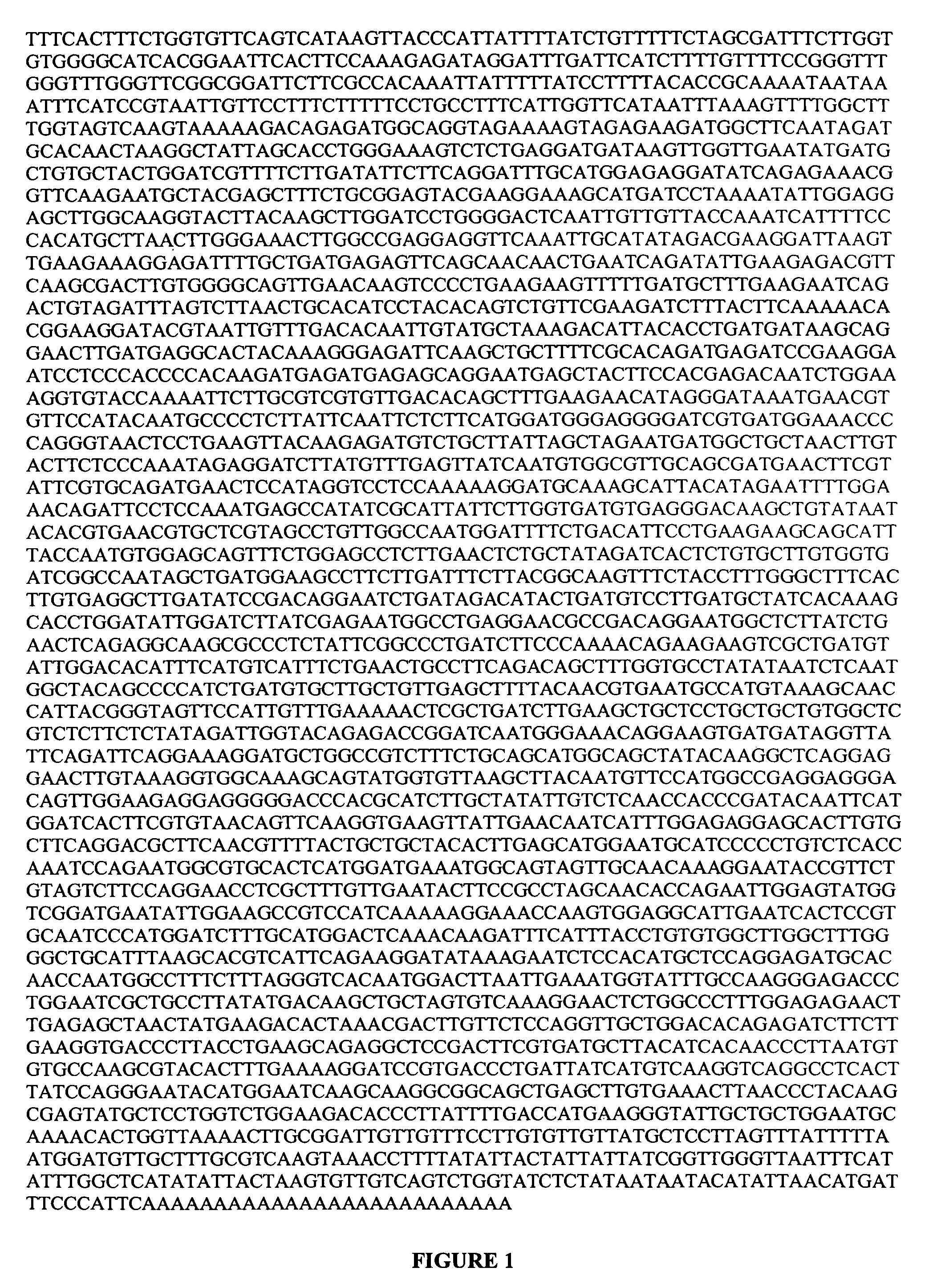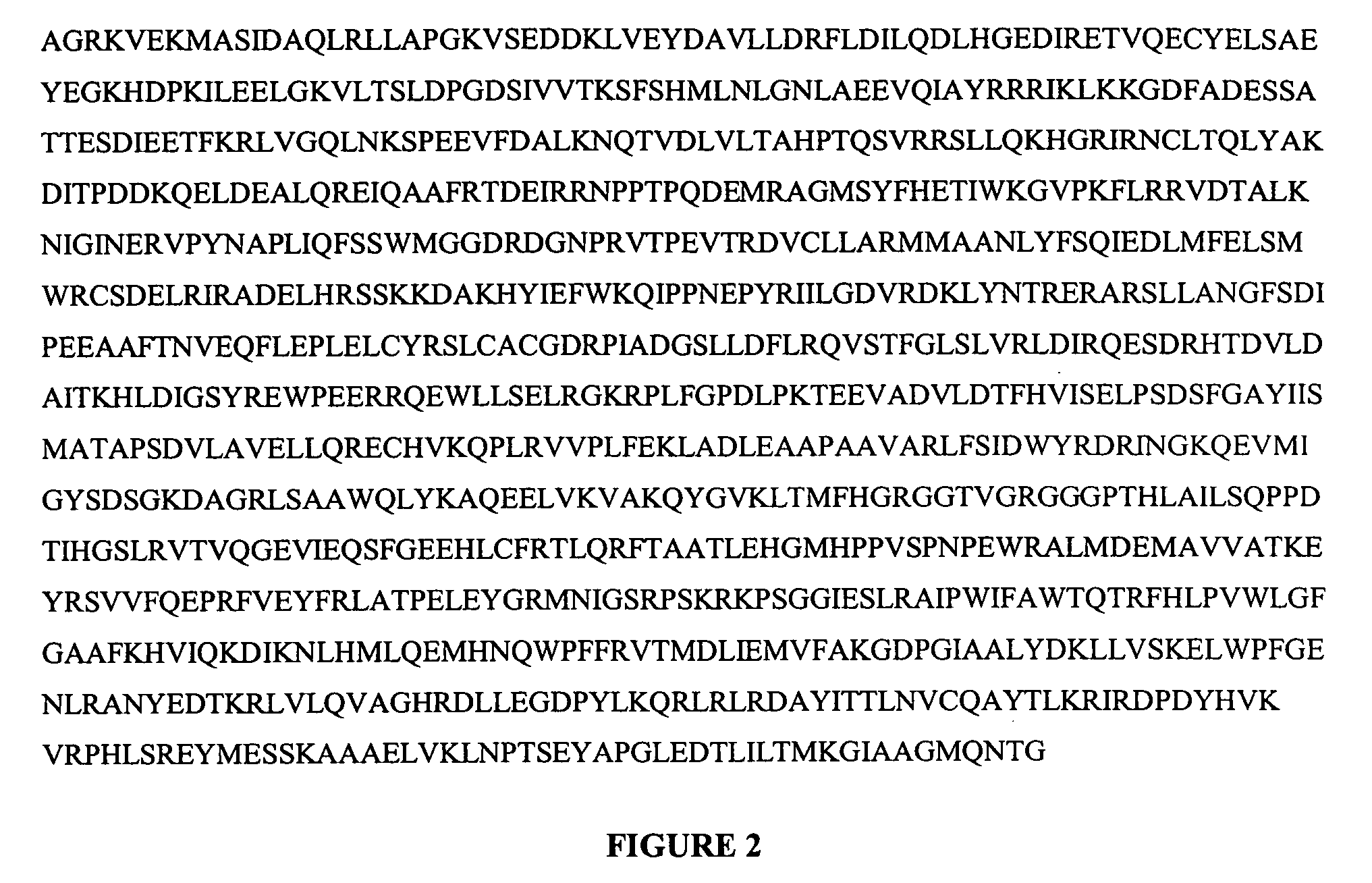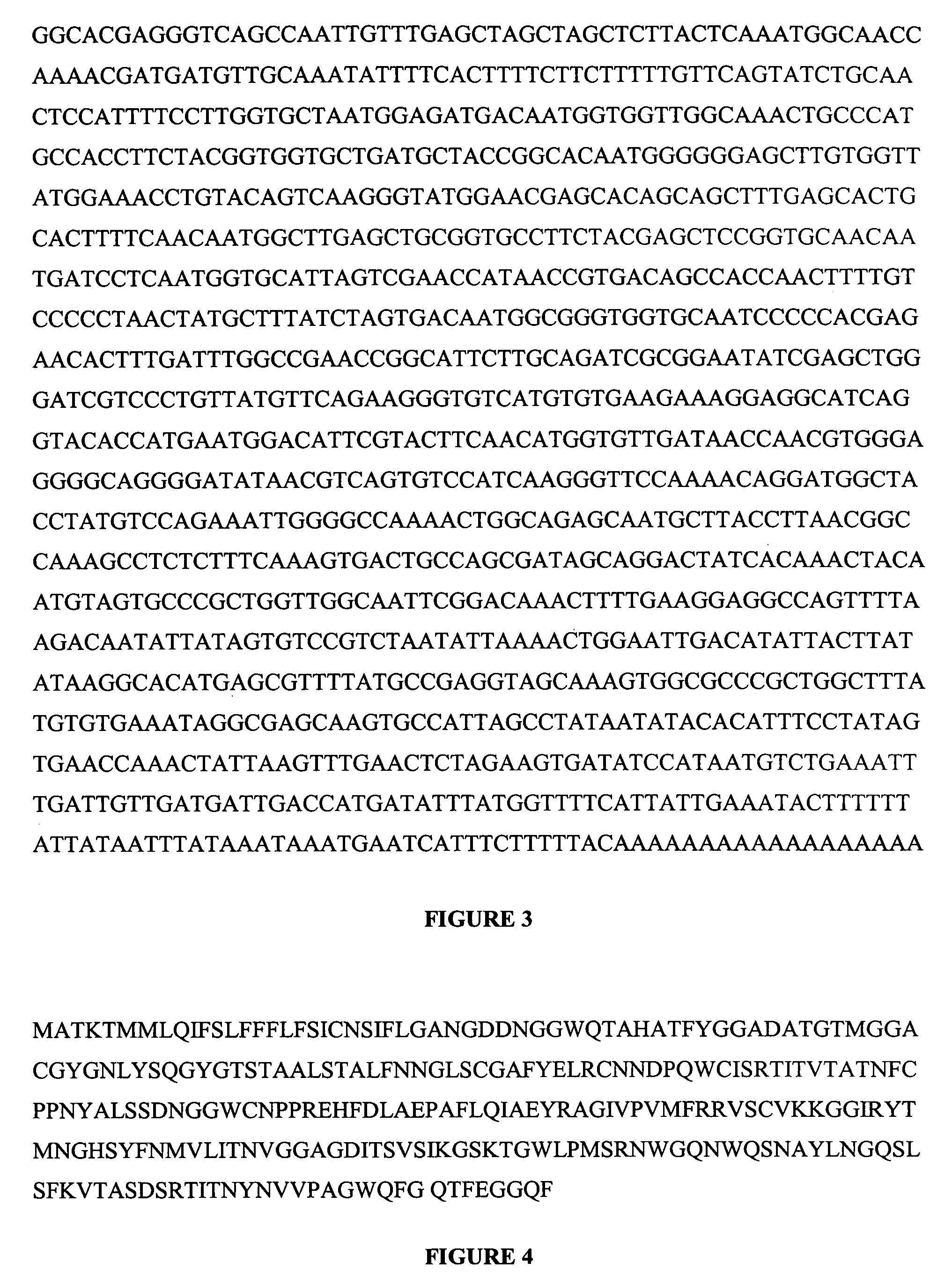Bioengineering cotton fiber properties
- Summary
- Abstract
- Description
- Claims
- Application Information
AI Technical Summary
Benefits of technology
Problems solved by technology
Method used
Image
Examples
example 1
[0112]A full-length cDNA encoding a fiber-PEPC was isolated from a cotton fiber cDNA library. The characteristic features of the complete cDNA clone, designated PEPC1, are described below. PEPC1 gene expression in cotton was evaluated by RT-PCR using total RNA and clone specific primers (Table 1). PEPC1 was expressed in fibers, embryos, and roots, but not in the light-exposed tissues of leaves, bracts, petals, or stigma. The expression of PEPC1 was higher in fibers collected between 10 to 15 days post anthesis (DPA) when compared to the ovule, embryo and root tissues.
[0113]Developmental changes of PEPC1 expression in fiber (5 to 25 DPA) paralleled the rate of fiber elongation and peaked around the day of maximum cell expansion. Cotton PEPC1 showed a higher level of amino acid identity to the C3-type enzyme from plant species (86–89% identity and 5–7% similarity) compared to 76–86% identity to the C4-type enzyme. These observations suggest that the PEPC1 gene is tissue-specific and c...
example 2
[0121]A fiber cDNA (GhEXP2) (SEQ ID NO: 3) encoding an expansin protein (SEQ ID NO: 4) was isolated from a cotton fiber cDNA library and sequenced. Expansin plays an important role in cell elongation and was targeted for ectopic expression as a potential means for improving traits. The results showed significant gains in cotton yield and all fiber quality properties and provided evidence that cotton plants can be successfully manipulated in order to alter specific traits in a desired direction.
Cotton Fiber Development:
[0122]Scanning electron micrographs have shown that fibers begin to grow and elongate coincident with opening of the flower on the day of anthesis. Fiber growth in the first few days post-anthesis (dpa) has been shown to occur via a diffuse-growing mechanism (Tiwari and Wilkins (1995) Can. J. Bot. 73:746–757). By 5 dpa, fibers begin to undergo a period of sustained and rapid cell elongation for 15–20 days, reaching maximum rates of elongation >2 mm / day. A proprietary C...
PUM
| Property | Measurement | Unit |
|---|---|---|
| Fraction | aaaaa | aaaaa |
| Nucleic acid sequence | aaaaa | aaaaa |
Abstract
Description
Claims
Application Information
 Login to View More
Login to View More - R&D
- Intellectual Property
- Life Sciences
- Materials
- Tech Scout
- Unparalleled Data Quality
- Higher Quality Content
- 60% Fewer Hallucinations
Browse by: Latest US Patents, China's latest patents, Technical Efficacy Thesaurus, Application Domain, Technology Topic, Popular Technical Reports.
© 2025 PatSnap. All rights reserved.Legal|Privacy policy|Modern Slavery Act Transparency Statement|Sitemap|About US| Contact US: help@patsnap.com



